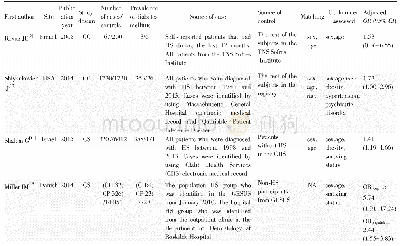《Table 3 Studies included in for study of plasmapheresis in acute liver failure in pediatric cohort》
 提示:宽带有限、当前游客访问压缩模式
提示:宽带有限、当前游客访问压缩模式
本系列图表出处文件名:随高清版一同展现
《Plasma exchange in patients with acute and acute-on-chronic liver failure: A systematic review》
There is currently no clear evidence to support the use of other assist devices in addition to plasma exchange in management of ALF.Several studies[4,10,20]included alternative assist devices to plasma exchange and made comparisons of its efficacy in the treatment of acute liver failure.For example,comparing plasma exchange vs plasma exchange+continuous venovenous hemodiafiltration(CVVHDF),Nakae et al[10]showed that the latter resulted in a decrease in inflammatory mediators and an increase in citrate compared to the former group.Another study,also by Nakae et al[10],reported use of plasmadiafiltration,a blood purification therapy where plasma exchange is performed using a selective membrane plasma separator while the dialysate flows outside the hollow fibers for management of ALF.In that study[21],less Table 2 Studies included for study of plasmapheresis in acute liver failure in adultsplasma was used per cycle:1200 mL fresh frozen plasma(FFP)and 50 mL of 25%albumin per session.However,patients had an average of 8.3 cycles of plasmadiafiltration,which is higher compared to other studies(Table 2).Transplant free survival rate was 38.1%,54.5%in ALF,and 20%in fulminant hepatitis;there was no control arm.Pediatric studies were evaluated separately,and in the included pediatric studies[19,22-27],the amount of plasma exchange per session ranged from 1-4plasma volumes per exchange.
| 图表编号 | XD00129034300 严禁用于非法目的 |
|---|---|
| 绘制时间 | 2020.01.14 |
| 作者 | Eunice Xiang-Xuan Tan、Min-Xian Wang、Junxiong Pang、Guan-Huei Lee |
| 绘制单位 | National University Health System、Centre for Infectious Disease Epidemiology and Research, Saw Swee Hock School of Public Health, National University of Singapore、Centre for Infectious Disease Epidemiology and Research, Saw Swee Hock School of Public Heal |
| 更多格式 | 高清、无水印(增值服务) |





